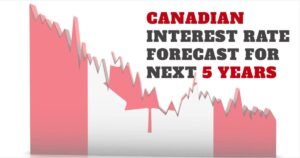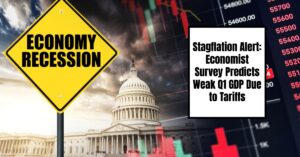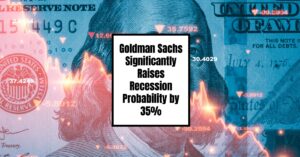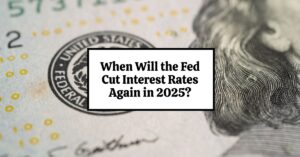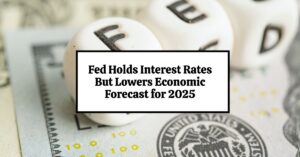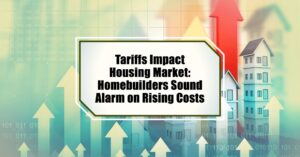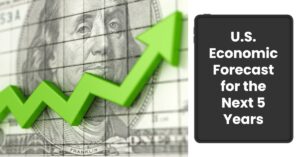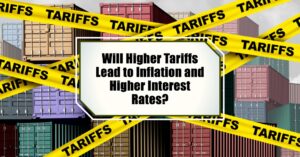Whether you're saving for a down payment, paying off a mortgage, or just curious about the Canadian economy, understanding where interest rates might be headed is crucial. So, what's the scoop? Based on current research, it looks like Canadian interest rates might just dip a bit to around 2.25% by the end of 2025.
After that, things get a little more complex, with a gradual climb expected, potentially reaching 3.25% by 2030. Of course, with all the twists and turns in the global economy, especially those trade talks with our neighbors down south, these are just forecasts, not written in stone.
Canadian Interest Rate Forecast for Next 5 Years (2025-2030): What You Need to Know
The Lay of the Land: Current Rates and What's Happening
Right now, as we stand on April 6, 2025, the Bank of Canada's main interest rate, what they call the target overnight rate, is sitting at 2.75%. This wasn't always the case, and the Bank has made some recent adjustments to try and steer our economy through some choppy waters. Think about it like driving a car – sometimes you need to tap the brakes, and sometimes you need to give it a little gas.
One of the big reasons for these adjustments? You guessed it – trade uncertainties with the United States. Our economies are so closely linked, so any bumps in that relationship can send ripples across our financial system. To try and keep things stable, the Bank of Canada has been using interest rate changes as one of its main tools. For example, they recently lowered the rate (like a little tap on the brakes) to try and encourage borrowing and spending, which can help businesses and people feel more confident. We saw the economy grow by a decent 2.6% in the last quarter of 2024, which is a good sign, but there's still a feeling of caution in the air.
Decoding the Crystal Ball: What Influences These Predictions?
Trying to predict the future is never easy, especially when it comes to something as complex as interest rates. There are a whole bunch of factors that economists like me look at to get a sense of where things might be heading. Here are a few of the big ones:
- Inflation: This is basically how much the price of things you buy every day is going up. The Bank of Canada has a target of 2% inflation. If inflation is too high, they might raise interest rates to cool things down. If it's too low, they might lower rates to try and get things moving. Right now, inflation is around 2.6% (as of February 2025), which is pretty close to that target, but those trade uncertainties I mentioned could push it in either direction.
- Economic Growth: How fast is our economy growing? Are businesses hiring? Are people spending money? If the economy is sluggish, the Bank of Canada might lower rates to encourage more activity. Forecasts suggest that our growth might be a bit slower in the next couple of years before picking up again around 2027. This slower growth could be a reason for those potential rate cuts in the near future.
- Unemployment: The number of people looking for work also plays a role. If unemployment starts to rise (current rate is 6.6%), the Bank of Canada might lower rates to try and stimulate job creation. Some predictions suggest that unemployment might stay a bit higher than usual for a while, which could also support lower interest rates.
- Global Trade: This is a big one, especially for Canada. What's happening with the global economy, and specifically our trade relationships (especially with the US), can have a significant impact. Those potential tariffs and trade disputes could really throw a wrench in the works, leading the Bank of Canada to adjust rates to either cushion the blow of a slowdown or deal with potential price increases if tariffs kick in.
Peering into the Future: A Year-by-Year Look (with a Grain of Salt!)
Based on what I'm seeing from various economic reports and expert opinions, here's a possible path for interest rates over the next five years. Keep in mind, this is just a forecast, and things can change quickly!
| Year | Possible Interest Rate (%) | My Thoughts and Reasoning |
|---|---|---|
| 2025 | 2.25% | Given the ongoing trade worries and the need to support economic activity, I wouldn't be surprised to see the Bank of Canada nudge rates down a bit further. This could make borrowing a bit cheaper for folks. |
| 2026 | 2.25% | If those trade tensions don't escalate too much and the economy starts to find a bit of balance, we might see rates hold steady for a while. This could be a period of seeing how things play out. |
| 2027 | 2.50% | As the economy hopefully starts to recover more strongly and inflation stays around the target, the Bank of Canada might start to slowly increase rates. This is a normal part of managing a healthy economy. |
| 2028 | 2.75% | With continued economic growth, we could see another small bump up in rates as the Bank tries to keep inflation in check. This might start to feel a bit more “normal” compared to the very low rates we've seen in the past. |
| 2029 | 3.00% | If the economy is humming along and things are looking stable, we might see rates continue their gradual climb towards a more neutral level. This helps to ensure we don't get runaway inflation. |
| 2030 | 3.25% | By 2030, if all goes well and we see steady, healthy economic growth, rates could settle around this level. This would be a more typical interest rate environment for a well-functioning economy. |
Now, I want to emphasize that these are just my interpretations of the available data and expert opinions. The actual path could be quite different depending on how those key factors I mentioned earlier evolve. And let's not forget those unexpected global events that can always throw a curveball!
What Does This Mean for You and Me? Potential Impacts
These potential shifts in interest rates can have a real impact on our daily lives:
- Mortgages: For homeowners and those looking to buy, lower rates in the short term could mean lower mortgage payments and potentially make it easier to enter the housing market. Some experts even suggest average mortgage rates could dip to around 4% in 2025. However, if rates start to rise later in the decade, those with variable-rate mortgages could see their payments increase.
- Borrowing: Lower rates generally make it cheaper to borrow money for things like cars or business investments. This can be a boost for the economy, encouraging spending and growth.
- Savings: On the flip side, lower interest rates mean you'll likely earn less on your savings accounts. This might push some people to look at other types of investments that offer potentially higher returns, but often come with more risk.
- Canadian Dollar: Interest rate differences between Canada and other countries, like the US, can affect the value of our dollar. Generally, higher interest rates can make our dollar stronger, which can be good for buying things from other countries but might make our exports more expensive. With the trade uncertainties already in play, any significant rate changes could have a noticeable impact on the loonie.
My Two Cents: Navigating the Uncertainty
From my perspective, the next five years for Canadian interest rates look like they'll be a bit of a balancing act. The Bank of Canada is walking a tightrope, trying to support economic growth while keeping inflation under control, all against the backdrop of some significant global uncertainties, particularly those trade discussions.
I think the potential for those initial rate cuts in 2025 makes sense given the current cautious outlook. It's a way to provide a bit of a cushion and encourage spending and investment. However, the expected gradual increase later on is also a prudent approach to make sure we don't see inflation become a problem down the road.
The biggest wild card, in my opinion, remains those trade tensions. Depending on how those play out, we could see significant deviations from these forecasts. Escalating tariffs could lead to a weaker economy and potentially even lower interest rates than currently predicted to try and offset the negative impacts. On the other hand, if trade relationships stabilize and the global economy picks up strongly, we might see those rate increases happen sooner and potentially be more significant.
It's crucial for all of us to stay informed and pay attention to what the Bank of Canada is saying, as well as keep an eye on those key economic indicators. Don't be afraid to talk to your financial advisor about how these potential interest rate changes might affect your personal financial situation.
In Conclusion
The Canadian interest rate forecast for the next 5 years (2025-2030) suggests a near-term dip to around 2.25% by the end of 2025, followed by a gradual rise to approximately 3.25% by 2030. This trajectory is heavily dependent on how economic conditions evolve, particularly in relation to global trade. While lower rates could provide a boost in the short term, the anticipated increases reflect a move towards a more typical interest rate environment. As always, these are projections, and staying informed is your best strategy.
Work with Norada, Your Trusted Source for
Turnkey Real Estate Investing
Discover high-quality, ready-to-rent properties designed to deliver consistent returns.
Contact us today to expand your real estate portfolio with confidence.
Contact our investment counselors (No Obligation):
(800) 611-3060
